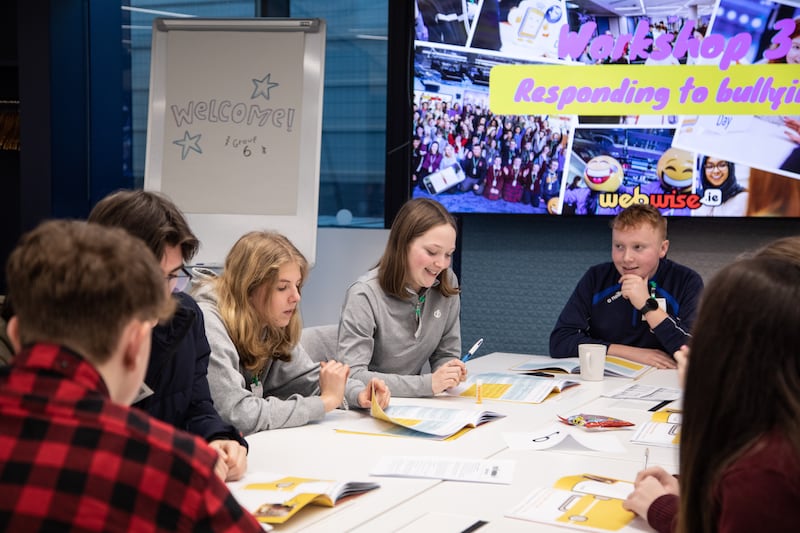Donal Rooney (16), a fifth-year student at Patrician High School in Carrickmacross, Co Monaghan, is all too well aware of how toxic social media can get.
“There is definitely a lot of hostility online. Bullying, negative comments… Whenever I see it, I get fed up and move on. I try not to get affected by it. Whenever I see it, I just stop looking at it,” he says.
His classmate Joe Murphy also sees how social media and apps can fuel cyberbullying behaviour or harassment on a daily basis.
“You see the algorithms pushing things at you on TikTok… people adding something to a video which a creator didn’t intend. They add in whatever they want to say. You see it on Instagram as well… It doesn’t seem to stop.”
RM Block
[ Anti-bullying strategy for schools to place new focus on gender identityOpens in new window ]
[ How parents can keep their children safe onlineOpens in new window ]
Their observations are backed up by research. Data gathered by Dublin City University indicates that young people in Ireland have experienced some of the highest rates of cyberbullying in Europe including hurtful messages being sent to them, mean messages being passed around or posted where people could see them, or being excluded from group activity online.
It might be easy to despair and wonder is there any way to fix our toxic internet. However, more than 100 young people who took part in the Safer Internet Day ambassador programme say they are determined to help their schools build a positive climate around internet use. The idea is to give students the tools to lead their own awareness-raising campaigns in schools, clubs and communities across Ireland.

The training programme was organised by Webwise, the Irish internet safety awareness centre. Jane McGarrigle, project officer with Webwise, said the programme had been designed and led by students, with support and training from the Webwise team. The topics explored within the programme included online wellbeing, privacy, big data, misinformation, cyberbullying and rights.
McGarrigle says cyberbullying remains the “number one” negative experience young people have online.
“Young people at the event have come up with lovely ideas on getting support, seeking help, how to encourage bystander behaviour, brainstorming on how to manage that and to protect themselves online,” she said. “The philosophy here is to build young people’s capacity, to empower and encourage them to play a role…”
[ The Irish Times view on internet safety for childrenOpens in new window ]
[ Nearly a quarter of teen girls see harmful weight-loss content online – studyOpens in new window ]
Niamh Hannan and Karina Walsh, classmates at Holy Faith Secondary School, Contarf, Dublin, said while there was not much emphasis on these issues in the school curriculum, these training events were giving young people a chance to educate other young people.
“I think we’re becoming more aware nowadays around the good and the bad of social media like Instagram,” says Walsh (16). “It can be nice to see what your friends are up to, but it’s also fake: people post the best bits of their lives… it can only lead to body-image issues which, without realising it, can affect you.”
The training sessions they attended have focused on issues such as respect, empathy, how to be an “upstander” and call out negative behaviour, and where to go for support.
One initiative they plan to roll out at their school is to spread awareness over signing up for “free” services and how information is harvested by tech companies.
“We’re all guilty, we never read terms and conditions you’re signing up for,” says Walsh. “Yet, companies can keep your data for years, even if you delete your account or photos. It stays around… people need to be aware of that.”
Hannan (16) adds: “We’ve learned so much here. It is really beneficial. We’re going to share our learning around school and tell our friends.”

















